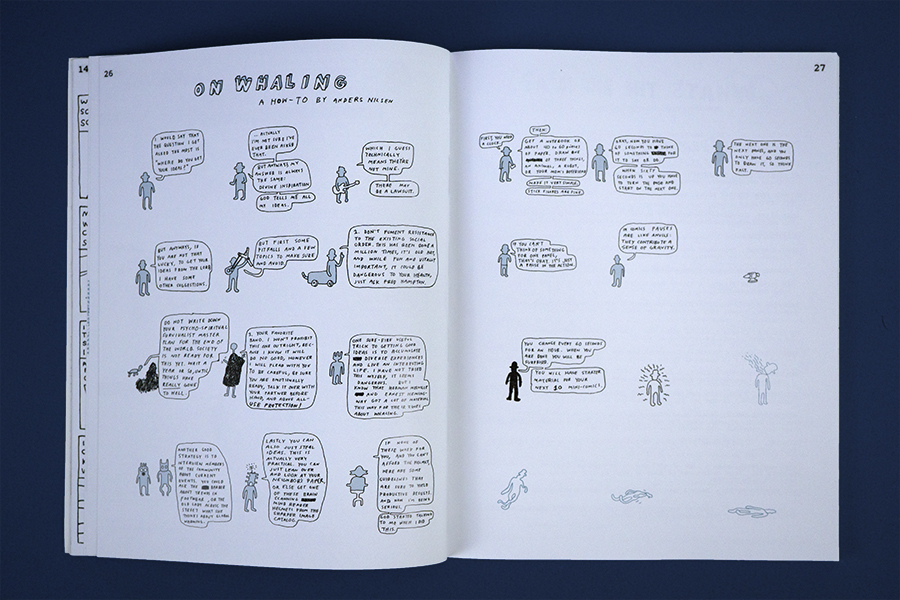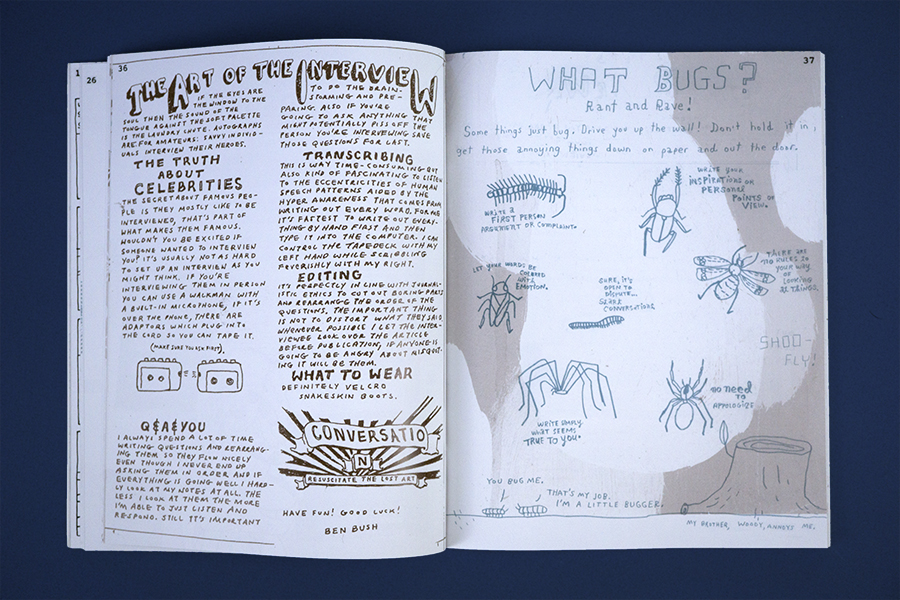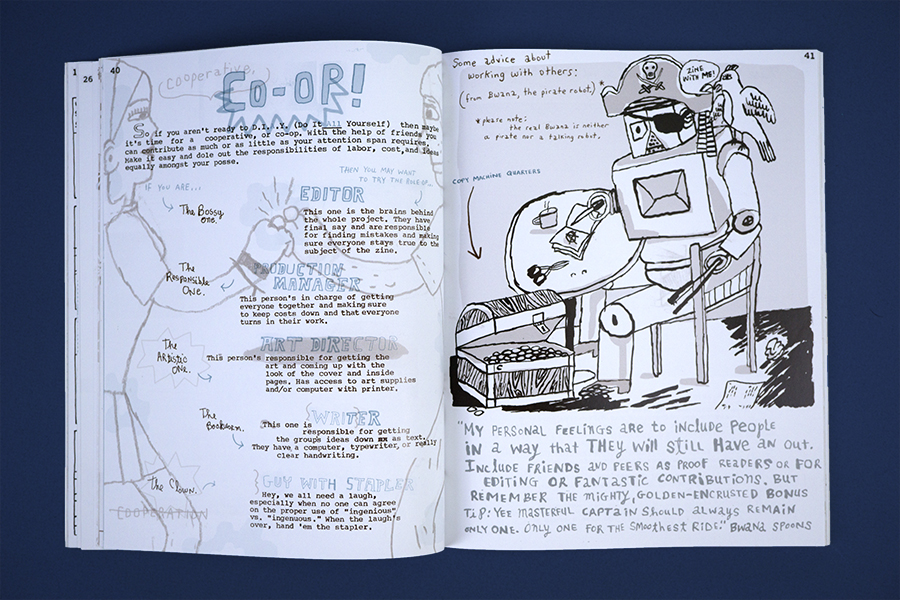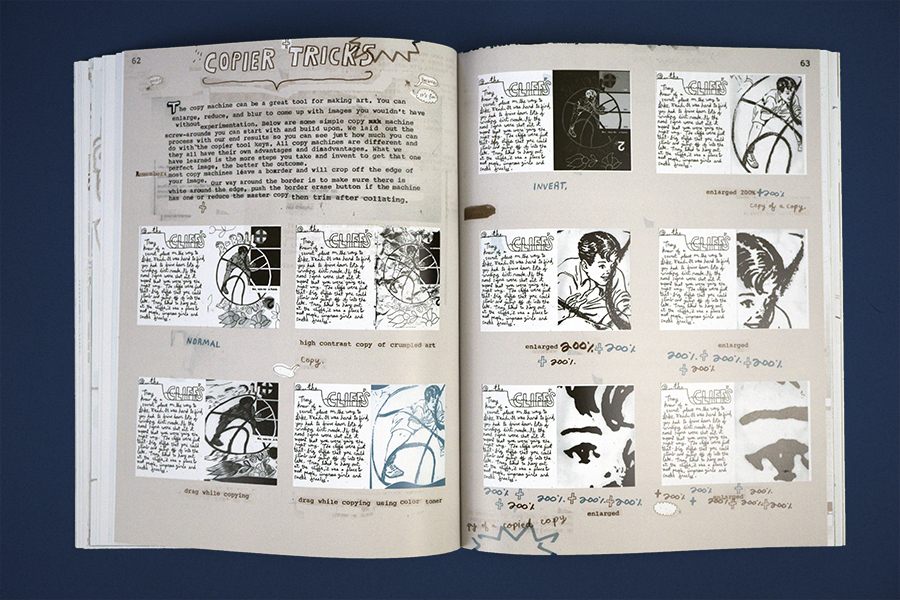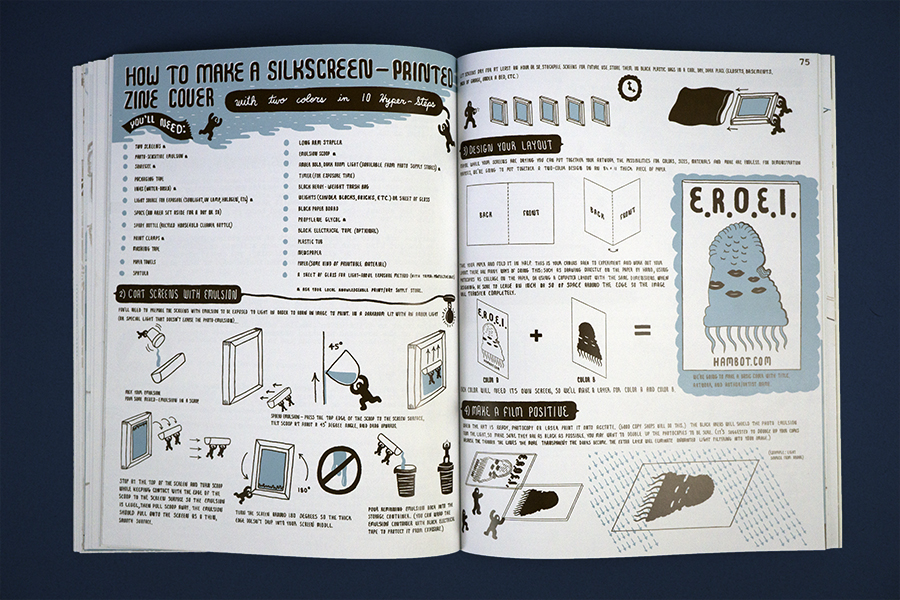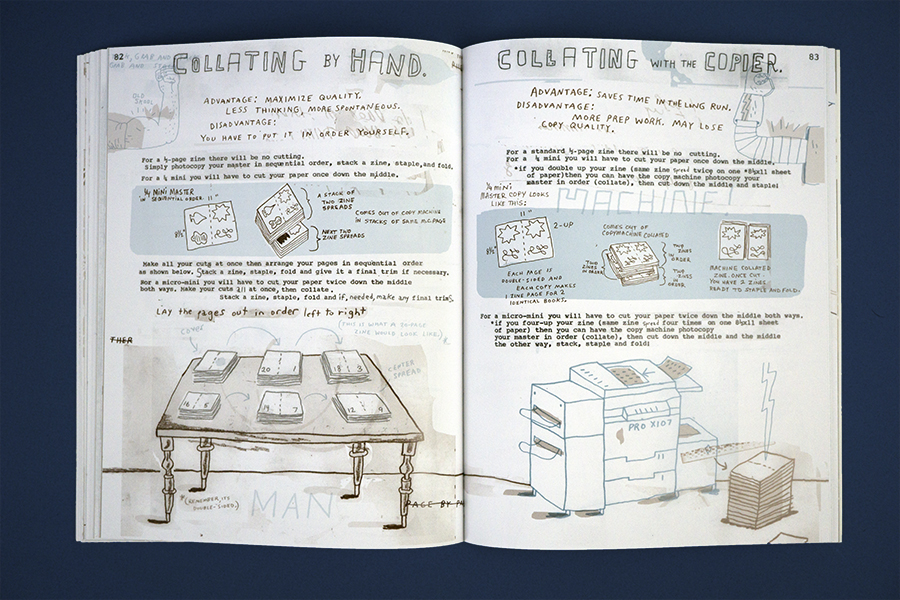Whatcha Mean, What's a Zine?
TITLE AVAILABLE AT
Barnes & Noble
Book Depository
TITLE INFORMATION
Author: Esther Watson & Mark Todd
Publisher: HMH Books
Year Published: 2006
Dimensions: 7 in x 9 in
Pages: 112
Whatcha Mean What’s a Zine is the all-to guide about the zine, how to make it, and how to distribute it. With its quirky illustrations, type-writer-esque fonts, and overall lack of formal format, this book emphasizes the basics of zine culture that will have any reader eager to make a zine before they can even finish reading this book. This book highlights what zines are, their history, various forms of zines, how users can brainstorm and create their own, productions techniques and tips, and how to get one’s own zine out into the real world and to begin making a profit. Featuring various, funky illustrations on every single page, along with accounts from various zine makers, this book emphasizes what zine culture is all about.
One of the best aspects of this book is the amount of recommended topics that users can utilize to make their zine. There is page after page of suggested topics that range from being vague to very specific. Some topics include rants, fiction, and reviews, treasure hunts, garbage finds, and mini manifestos. There are even recommended brain exercises to help users brainstorm concepts, ideas, and creative techniques. This book is also very creation-positive in that it puts absolutely no pressure into making zines for anyone but the creator. It stresses the importance that, no matter what, the process of making the zine will always be more important than the final outcome of the zine.
That being said, the book does dive into commercial aspects of zine making. It talks about mass production via FedEx copy machine, starting a zine team along with the different roles that can be assigned, and how to get one’s zine out into the real world via distros (distribution outlets like online and brick and mortar vendors). This is a unique point because most books about DIY publication do not go as deep into specifics about the commercial aspects. They tend to stray away from that or lightly touch on it, but this book spends at least 1/3 of it talking about it. There is even a list in the back of the book with vendor information that serves as a great starting out point if someone wants to get their zine out there.
There are very few complaints about this book. One of the biggest problems with this book is that the readability has been sacrificed for aesthetics in certain areas. These areas include tiny, tightly spaces script, and typing with x’d out spelling errors that make reading it so confusing. This significantly reduces reading efficiency. Some would say that this is the point of a zine, but it is important to note that this is not a zine, this a book about zines. Another complaint is there is an infographic in the first part of the book where there is an illustration of a man, and around him are various historical steps that have led to the creation of the modern zine. The issue is the illustration has absolutely no contextual significance to the events being listed around him. To make matters worse, the timeline of events starts from the bottom left side of the page and navigates up and around the illustration, with little arrows pointing from the event to random parts of the man. Although there are ghosted illustrations of the events behind each event, they are hardly noticeable
There is one addition that should be added to the book to make it even better than it already is, and that is the inclusion of at home printing to make zines. This book heavily focuses on different folding and binding techniques to make zines, along with different printing techniques like copy machine, screen-printing, off-set printing, and ditto machine. But there is no talk about different at home printers that can be used to efficiently make zines at home. The inclusion of laser and inkjet printing at home would allow users to use technology that probably already have to make zines even cheaper at home. This would also allow users to experiment with printing in the comfort of their own homes versus struggling at a Kinkos while other customers are impatiently waiting to use the machine next.
This book is perfect for anyone interested in zine making, from the zine novice to expert, from the graphic designer to the punk rebel, and everyone in between. This book discusses a wide range of topics at a digestible level so anyone can gain something vital from it. This book ranges for about $12 on Amazon and it is certainly worth the price.

